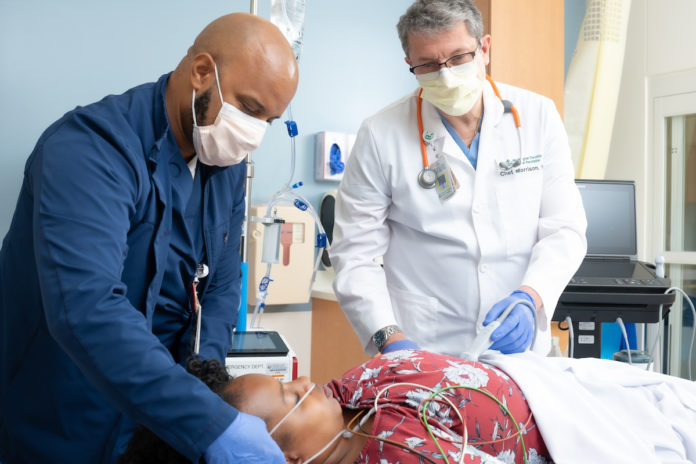“We thought we might get the volume we did, but we didn’t know that for sure. We received far more volume than we projected, realizing that many more people need this service.”
Dr. Chet Morrison, Trauma Medical Director at Washington Hospital
For Washington Hospital’s new trauma center, the need was there “literally from day one.” That day was July 1 2024, when the trauma center went live and started seeing patients. Now the center has reached its 90-day review, surpassing its goals. But the hospital knows there is still work to do to serve trauma patients in the East Bay Area.
The Level II Trauma Center provides a critical service because before its opening, patients with life-threatening injuries had to be transported to either Eden Medical Center or San Jose Regional Medical Center to receive the specialized care they needed.
According to Dr. Chet Morrison, Trauma Medical Director at Washington Hospital, the center serves 150 activations a month —patients where a trauma team is activated— plus occasional transfers and patients who self-present. He further estimates that this will add up to around 1,800 patients per year. He says, “We thought we might get the volume we did, but we didn’t know that for sure. We received far more volume than we projected, realizing that many more people need this service.”
The rapid influx of patients did present some hurdles—including the increased volume of imagining required. Also, an additional trauma surgeon was added to the staff and the Trauma Program needed to provide further education for current staff on the practicalities of trauma care. Now the mission is to balance the needs of the trauma center with the routine care offered by the rest of the hospital. Dr. Morrison notes, “In a sense you can say this is now learning to do two things at once.”
To this end, the hospital seeks to add a new Siemens Magnetom Lumina 3T MRI machine to the Trauma Center. The utility of an MRI machine to trauma care is evident. Dr. Morrison explains, “The MRI is a very good technique to image tissue, to give us pictures of various parts of the body. Because of the physics of MRI, one of the things that it does really well, for example, is showing us pictures of the spinal cord and the nerves.” He continues, “We have other techniques that show us broken bones, but the soft tissues, the ligaments that surround it aren’t very well imaged by other techniques, but they’re very well imaged by MRI. The MRI is even sensitive enough to show you the degree of inflammation so you can make diagnoses about how recent the injury is.” An accurate diagnosis informs which patients need a brace, which need surgery down the line and which need to be rushed to emergency surgery.
Naturally, Washington Hospital does already have an MRI, located at Washington West. A quick look at the map shows why this is an issue for the Trauma Center: Civic Center Drive separates the two locations, meaning trauma patients need to be transported via ambulance to get a scan. Also, Washington West is an out-patient building. Dr. Morrison explains, “It’s a building that was designed for people to just show up at the door and go, ‘Hi I’m here for my [fill in the blank].’ It does that very well. It’s not designed for inpatients, particularly patients who need a lot of medical support.”
This year’s Top Hat Gala—the hospital’s annual fall fundraiser—took on the new MRI machine as its goal. Held outside Washington West and themed around Italy, the gala welcomed community members, small business owners, philanthropists and other partners of the hospital. Guests enjoyed Italian-themed cocktails, a multi-course dinner, live auction and dancing. Italian tenor Pascquale Esposito gave a performance, and Alex Savidge of KTVU FOX 2 acted as master of ceremonies. To convey the value of this fundraising venture, a community member patient (born in Washington Hospital 22 years ago) described her serious and frightening experience that required an MRI for her diagnosis.
Reflecting on the Center’s progress so far, Dr. Morrison is reminded that the need —or observable need— for trauma care can be elastic, with more patients presenting as care becomes available. “The response we got was pretty quick in terms of the volume of patients we had. There was a real need for this level of care.”




